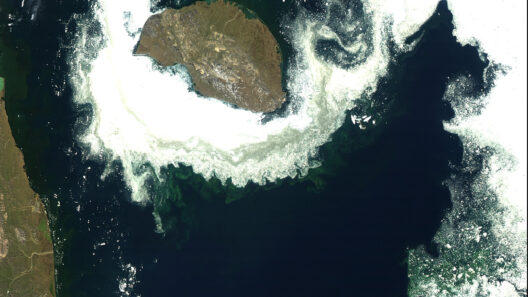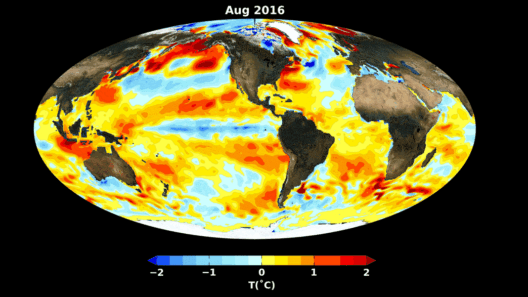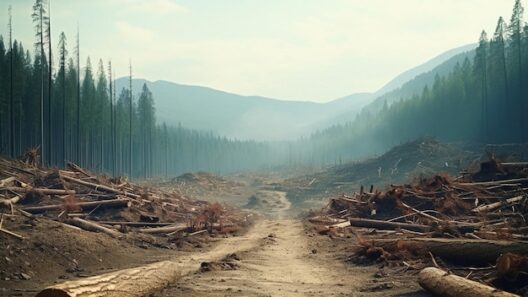In the grand theater of economic evolution, creative destruction stands as a captivating yet tumultuous act. Picture a sculptor chipping away at a block of marble to create a masterpiece. Each strike of the chisel embodies the promise of innovation, reshaping the old into something new and ostensibly better. However, the relentless pursuit of progress can often lead to unintended consequences, particularly in the environmental arena. The symbiotic relationship between progress and ecological degradation is a complex narrative intertwining prosperity and peril.
At its core, creative destruction is an economic phenomenon where outdated practices, technologies, and products are inexorably supplanted by newer, more efficient alternatives. The essence of this transformation is not a mere cycle of replacement but an intrinsic impetus driving capitalism forward. The innovators blending entrepreneurial vigor with disruptive ideas are akin to connoisseurs of change, selectively dismantling established frameworks to pave the way for more sustainable practices. Yet, it is imperative to scrutinize the broader implications of this cycle, particularly concerning climate change.
Let us traverse the landscape of technological advancements. Renewable energy, such as solar and wind power, epitomizes the quintessence of creative destruction. Traditional fossil fuel industries are becoming relics of a bygone era, analogous to the dinosaurs dwindling into obscurity. Solar panels glimmer on rooftops as clean, renewable energy gradually displaces coal and oil. However, this transition carries a dual-edged sword. The production and disposal of photovoltaic cells, for instance, have their own environmental ramifications. Rare metals utilized in solar technology necessitate expansive mining operations, leading to deforestation and ecological disruption. Thus, while the intention is noble, the ramifications can be profound, illustrating how even commendable intentions may stir ecological imbalances.
Moreover, consider how the rise of electric vehicles (EVs) represents a contemporary embodiment of creative destruction. The automobile industry is experiencing a dramatic metamorphosis as manufacturers pivot towards electric mobility. Once revered for their efficiency, internal combustion engines are ceding ground to these electric counterparts. Yet, their ascendance underscores complex environmental challenges that warrant attention. The production of EV batteries, notably lithium-ion variants, hinges on the extraction of lithium, cobalt, and nickel—elements that present significant environmental risks. Mining operations can obliterate ecosystems, pollute local water supplies, and induce social and economic strife among communities. This scenario exemplifies the paradox of innovation: while it propels us towards a potential reduction in greenhouse gas emissions, the underlying practices and materials can embody significant ecological tolls.
Simultaneously, the digital revolution has wrought its fair share of creative destruction upon traditional industries, offering a nuanced commentary on sustainability. The proliferation of e-commerce and digital platforms offers unprecedented convenience and efficiency, sparking a transformation that rivals the Industrial Revolution. However, the very act of ordering goods online often leads to a surge in logistics operations, exacerbating carbon emissions. The rapid delivery model, coupled with heightened consumer demand, fosters an insatiable appetite for resources and packaging materials that often end up in landfills. The convenience of online shopping belies a troubling reality: the environmental footprint associated with ensuring rapid delivery can overshadow the intended benefits of reduced physical retail emissions.
Navigating the intricate tapestry of creative destruction necessitates a holistic approach. To truly harness the potential of innovation while circumventing environmental degradation, thought leaders and policymakers must engage in vigilant scrutiny of emerging technologies. This entails enacting stringent regulatory frameworks that promote sustainable resource management practices. Additionally, fostering a circular economy—where materials are continually reused rather than disposed of—can profoundly alter the trajectory of progress and its environmental implications.
Furthermore, the role of consumer behavior bears mention in this discourse. As individuals increasingly embrace sustainability-conscious choices, they propagate a cultural shift that can dictate the direction of innovation. The practice of voting with one’s wallet has the innate power to spur corporations towards greater ecological responsibility. Businesses, in response, might invest in sustainable practices that minimize environmental footprints or even harness creativity to regenerate natural systems instead of depleting them.
In conclusion, creative destruction embodies the duality of transformative progress, presenting both tantalizing opportunities and daunting challenges. Just as the sculptor shapes the marble into an exquisite form, so too must humanity wield the tools of innovation with discernment and care. The artistry of creation need not come at the expense of the Earth. Rather, by embracing conscientious practices and fostering sustainable innovations, society can sculpt a future that respects and nurtures the environment while still advancing technological frontiers.
Ultimately, the narrative of creative destruction serves as a poignant reminder of humanity’s responsibility toward the ecosystem. By carefully navigating the corridors of innovation, we can aspire to create a harmonious blend of progress that respects our planet and its finite resources. This journey requires vigilance, fortitude, and perhaps the wisdom to recognize that not every good idea is an unmitigated good, particularly when woven into the fragile fabric of our climate.







